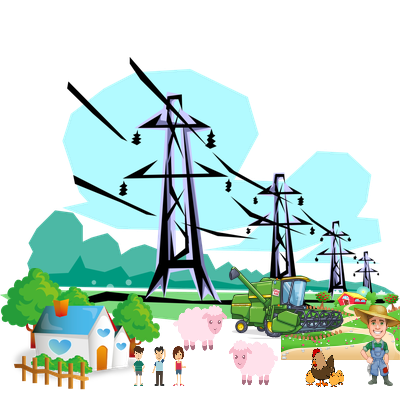
This page is an abbreviated version of a longer document (pdf file) about undergrounding that you can download.
A really big question that keeps recurring is - why can’t the transmission lines be put underground?
Much has been written about the undergrounding of transmission lines but the conclusions don’t always seem consistent.
Many of these reports ignore impacts and consider system benefits as paramount.
Put simply, there are no accepted answers to either the costs or the benefits of going underground.
It is astounding that AEMO and others have not answered this question. The standard response is that it’s too expensive. But the reality is that they haven’t made any effort to educate or convince people. The failure to back up the response has made people suspicious.
AEMO’s Integrated System Plan states that the cost of underground is 3 to 20 times that of overhead.
Preparing a cost analysis comparing overhead versus underground is a daunting task, so it is unlikely anyone outside the industry can build a credible model or have access to the data required.
What can be done though is a broad comparison of projects that are recently completed or committed to. Because most transmission projects are government backed, the basic facts such as distance, power rating and cost are generally public data so it’s pretty easy to compare $/km and so on.
Some recent projects worldwide are shown on the following spreadsheet.

Costs have been adjusted to AUD and for inflation where appropriate.
Data sources as follows:
Champlain Hudson Power Express
It is highly recommended for anyone to review these projects (and many more).
Analysis
HumeLink has recently been committed to and the costings are therefore baked in. No doubt there are clauses to allow for contingencies, but it won’t be any cheaper than this.
The two most important columns are the last two, which show the cost of a project compared to HumeLink. And the most important of those two is the last one.
1. The $M/km multiple column compares only the cost of building the line compared to HumeLink.
2. The $M/km.GW multiple column compares the cost of building the line and takes into account how much power it can carry compared to HumeLink.
One of the first things to notice is that AEMO are projecting that VNIWest will be substantially cheaper than HumeLink. Does this sound correct or even likely? There are already rumblings about increasing costs, so it seems likely that the estimated cost is well under.
The second thing to notice is that there are no underground projects that are in the 3-20 multiple-range as postulated by AEMO. The most expensive is the Champlain Hudson project to take power from Canada to New York and is a very, very complex project.
According to AEMO, any tunnelling takes the cost nearer to the 20 multiple, but the Champlain Hudson project is mostly bored and tunnelled under lakes, rivers and urban areas but comes in at only 2.2 times.
MurrayLink has been included just to show an example in Australia. Finished in 2002 and running from Berri in South Australia to Renmark in Victoria. Once said to be the longest underground HVDC cable in the world. Apparently it was a good idea then. Not very high power, but possibly to be upgraded.
Really interesting is the SOOGreen project where the costs are significantly less than overhead. Also worth noting is that this project is totally privately funded, so not being paid for by the government. It does raise questions about cost estimates provided by Ausnet and TransGrid for what they want to be paid by the government.
The most comparable project to HumeLink and VNIWest is the German SUEDLink. It is specifically designed to move renewable energy from generation areas to where the electricity will be consumed. It operates in both directions at slightly greater power than VNIWest, moving wind power north to south and solar power from south to north. A very sophisticated project that in terms of capabilities appears to be only the same cost as the HumeLink overhead lines.
Another aspect of these underground lines, especially in the USA is the focus on using existing right-of-way for the route. Mostly this is beside railways.
The underground question is definitely not answered to the community’s satisfaction.